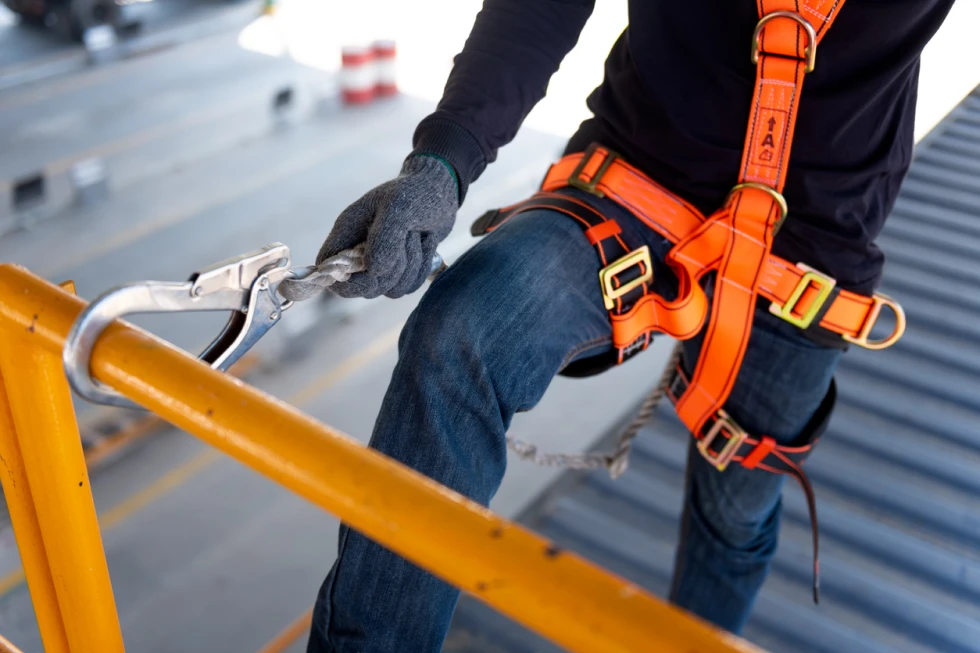Construction projects big and small can’t be completed without the right construction tools and equipment. If the same tools that make the work possible are not managed properly, though, they can pose significant safety risks that cause serious injuries and shut down construction projects for days or weeks. For this reason and more, it is in the best interest of construction companies and individual workers alike to make sure all construction equipment is safe for use.
When everyone pays attention to the quality and maintenance of construction equipment, accidents caused by unsafe equipment can be avoided. By prioritizing safety above all, it’s possible to ensure that these sites remain productive without compromising the well-being of those who work there. All it takes to get pointed in the right direction is a little knowledge about how to safely work around and with construction equipment.
Tips to Avoid Unsafe Construction Equipment Accidents
Unsafe construction tools and equipment can create serious hazards on construction sites. However, these risks can be mitigated through regular inspections, timely repairs and replacements, proper training, and other basic safety procedures. While the responsibility for inspecting construction equipment may depend on who brought it to the site, it’s typically the foreman’s or supervisor’s duty to be aware of the tools and equipment being used by the team. If you aren’t sure who should be inspecting the equipment on your job-site, you should ask your supervisor or the onsite safety inspector if one is available.
Common types of unsafe construction equipment and how their associated risks can be minimized:
- Defective power tools: Regularly inspect power tools for any signs of wear and tear or malfunction. If a tool is defective, it should be immediately taken out of service until repaired or replaced.
- Unsafely operated construction vehicles: All operators should be properly trained and certified to handle their respective vehicles, such as excavators, forklifts, bulldozers, etc. Additionally, regular maintenance checks should be conducted to ensure the vehicles are in good working condition. If repair work is needed, a certified mechanic should be the one to complete it.
- Damaged electrical sources: Electrical sources should be regularly inspected for any signs of damage, such as frayed wires or faulty connections. Any damaged electrical sources should be promptly repaired or replaced by a licensed electrician.
- Misused material-handling equipment: Ensure all workers are adequately trained in the correct use of material-handling equipment. This includes knowing the equipment’s weight capacity, proper loading techniques, and safe operational procedures. If you don’t know how to use a piece of equipment or power tool, don’t guess. Ask someone to show you.
- Broken elevators: Regular inspections and maintenance can prevent elevator malfunctions. Any issues identified during these checks should be addressed promptly to prevent accidents. Elevators that are frequently loaded with heavy equipment may break down much faster than a typical elevator, too, which is why elevators on construction sites should be inspected more carefully.
Is the Construction Equipment Manufacturer Liable for Accidents?
The liability of a construction equipment manufacturer in accidents involving unsafe tools or equipment can vary based on several factors and the specific circumstances of the accident. If it can be proven that the equipment was inherently unsafe due to a design flaw, manufacturing defect, or inadequate instructions or warnings, the manufacturer could potentially be held liable under product liability law. However, if the equipment became unsafe due to improper use, lack of maintenance, or modifications made after purchase, the responsibility might fall on another party, such as the company or employer responsible for maintaining the equipment. It’s crucial to note that laws and regulations may differ across jurisdictions, so consultation with a legal professional is advised for specific situations.
How Do Construction Workers File an Injury Claim?
If a construction worker suffers an injury due to unsafe construction equipment, the process of filing a claim can be complex, as it involves identifying the liable party and gathering evidence to support the claim. The liable party could be the manufacturer of the equipment, the employer, a subcontractor, or another third party, depending on the circumstances of the accident.
The first step is to report the incident to the supervisor or manager as soon as possible and ensure that an official accident report is created. Medical attention should be sought immediately, even if the injuries seem minor initially. This not only ensures the worker’s health but also creates a medical record that can serve as important evidence.
An investigation will likely be required to determine who is at fault for the accident. This may involve inspecting the equipment, reviewing safety protocols and maintenance records, and interviewing witnesses.
Given the intricacies of these cases, it’s highly recommended to work with a construction accident attorney. They can guide injured workers through each step of the process, from gathering evidence and identifying the liable parties to negotiating with insurance companies and potentially filing a lawsuit.
Keith Silverstein & Associates in NYC focuses on construction accident claims for injured workers who can’t use workers’ compensation or need to pursue damages not covered by workers’ comp. If you were hurt due to unsafe construction equipment while working on a New York City construction site, please call (646) 813-3922 as soon as you can. Complimentary consultations are available for all construction workers and other professionals in the industry.


